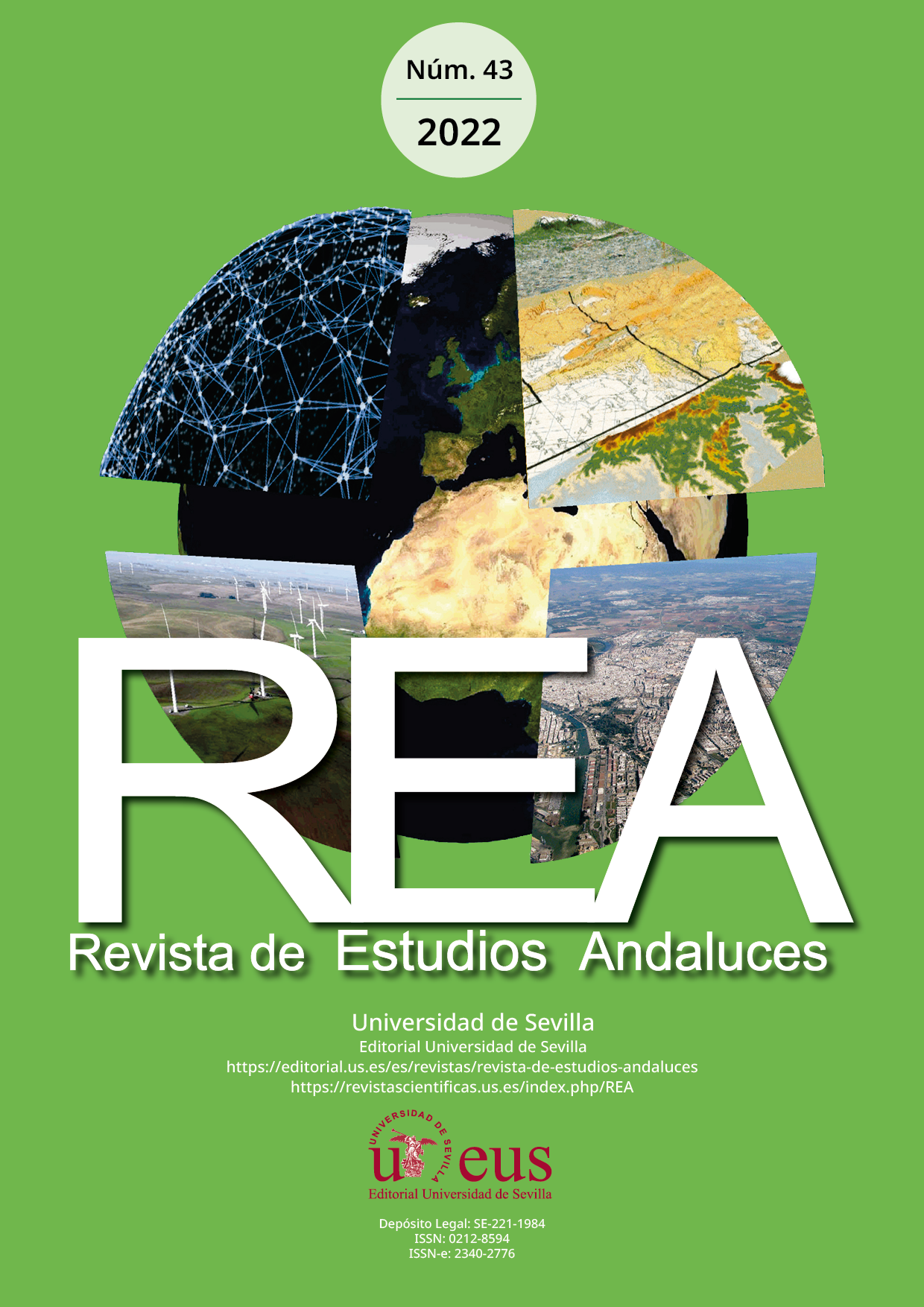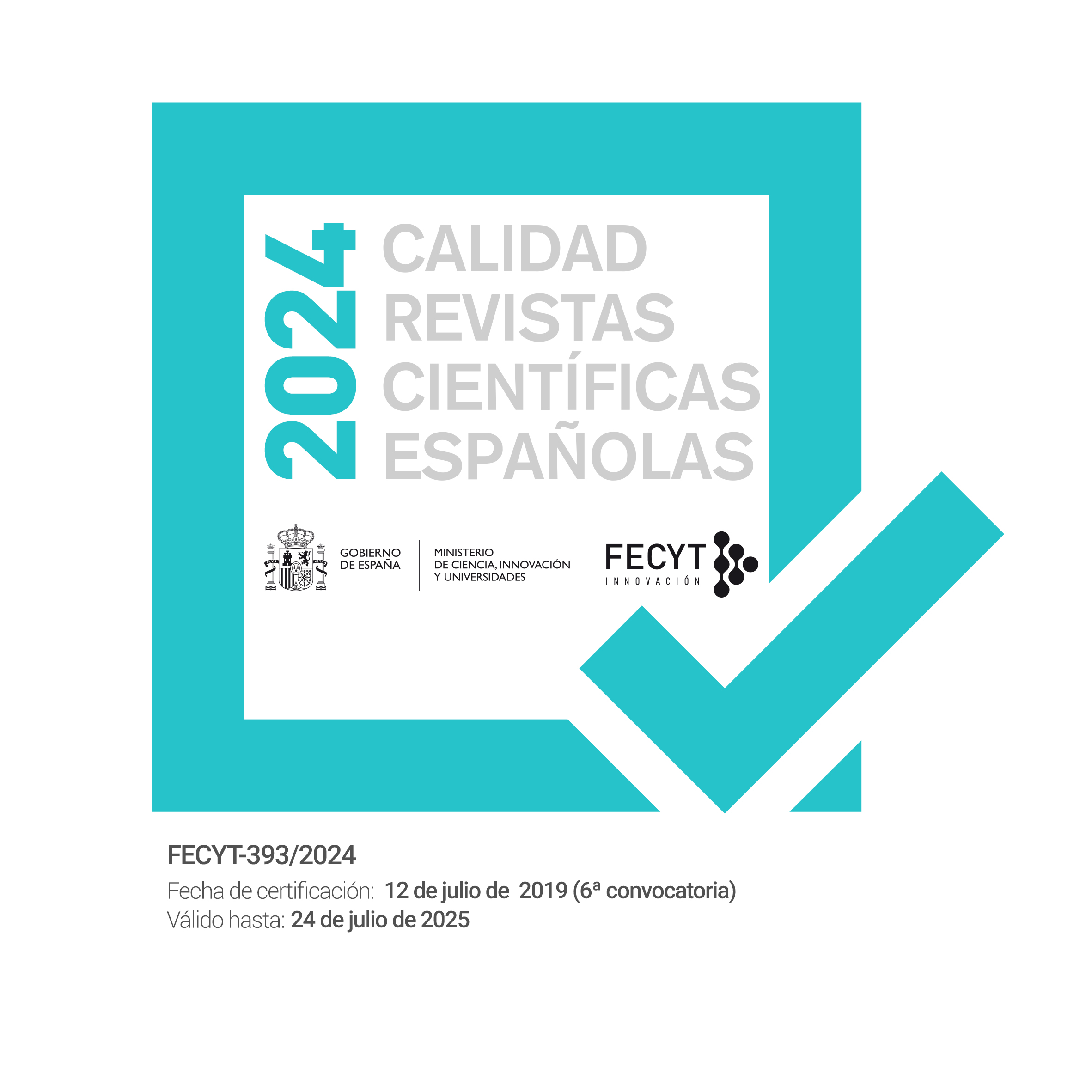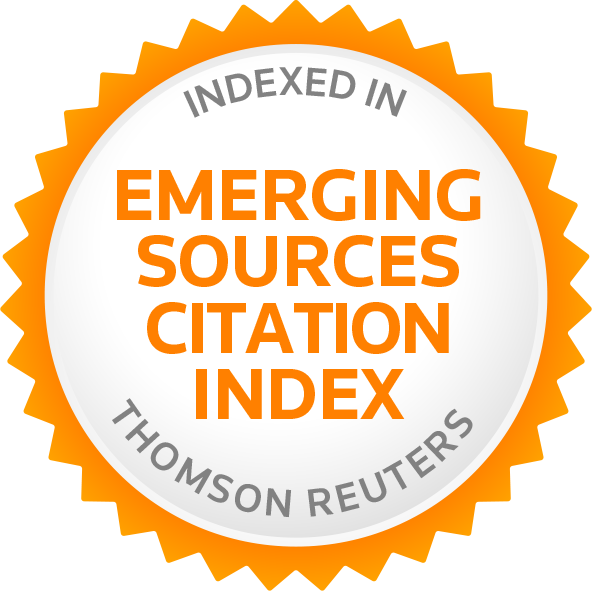Transporte aéreo y pandemia de la COVID-19: ¿Hacia un cambio de trayectoria en la red aeroportuaria española?
DOI:
https://doi.org/10.12795/rea.2022.i43.09Palabras clave:
Transporte aéreo, COVID-19, Red aeroportuaria, Conectividad, EspañaResumen
La COVID-19 ha supuesto un profundo shock en la economía global y en particular en la industria de la aviación, al ser esta damnificada de medidas restrictivas para frenar la propagación del virus. En este trabajo además de presentar, como contexto, el impacto de la COVID-19 a escala global en el sector comercial de la aviación, se realiza un análisis de la conectividad aérea de los aeropuertos españoles para comprender los cambios acaecidos. Para el estudio, de carácter diacrónico (1970-2020), se emplea un coeficiente de conectividad topológica, cartografía y otras medidas (análisis de frecuencias y volumen de viajeros). La pandemia está suponiendo un punto de inflexión en la historia aeronáutica que obliga a una adaptación constante en España y en el resto del mundo, tanto en términos comerciales como en materia de seguridad sanitaria.
Unlike other previous crises (Gulf wars, 9/11 terrorist attacks, 2008 financial crisis), the deep recession caused in the sector has led many experts to describe it as the worst in the entire history of commercial aviation, with noticeable effects on all study metrics.
In addition to presenting the impact of the pandemic on the commercial aviation sector on a global scale, based on official data and statistics from the main industry organizations, the main objective of this work is to carry out an analysis of the air connectivity of the Spanish airports to understand and visualize the changes that have occurred in the country's airport network due to the COVID-19 pandemic. To do this, the degree of national structuring between urban systems (national connectivity) and the evolution of the participation of Spanish airports in the global scenario (international connectivity) in 1970, 2015, 2019 and 2020 (first post-pandemic summer) will be analyzed diachronically. , through the study of connectivity with a topological connectivity coefficient.
The work closes with the conclusions of the investigation, presenting some of the initiatives undertaken by governments and aeronautical authorities to provide "certainty" in terms of health and safety in the world's airports, in order to rebuild trust in aviation. society in the short, medium and long term.
Descargas
Citas
ABC World Airways Guide (1970). Thos Skiner and Co. October 1970. London. World flights database (all flights, to/from all airports worldwide).
ABC World Airways Guide (2015). Digital Comber International Guides –OAG (all flights, to/from all airports worldwide; november).
ABC World Airways Guide (2020). Digital Comber International Guides –OAG (all flights, to/from all airports worldwide; august).
AENA (2015, 2019, 2020, 2021). AENA Estadísticas. Pasajeros, Operaciones y Carga. AENA. http://www.aena.es/csee/Satellite?pagename=Estadisticas/Home
Aeroespacial (2021). El tráfico internacional de pasajeros cae un 60% en 2020, según la OACI. Aeroespacial. https://actualidadaeroespacial.com/el-trafico-internacional-de-pasajeros-cae-un-60-en-2020-segun-la-oaci/
Agnew, J. (2001). The new global economy: time-space compression, geopolitics, and global uneven development. Journal of world-systems research, VII,2, 133-154. https://doi.org/10.5195/jwsr.2001.16.
Albers, S. & Rundshagen, V. (2020). European airlines′ strategic responses to the COVID-19 pandemic (January-May, 2020). Journal of air transport management, 87, 101863. https://doi.org/10.1016/j.jairtraman.2020.101863.
Amadeus (2021a). Seis tendencias que revitalizarán el espacio de los viajes en 2022. In: Amadeus. https://amadeus.com/es/articulos/blog/seis-tendencias-que-revitalizaran-el-espacio-de-los-viajes-en-2022
Amadeus (2021b). COVID-19. Impacto y respuesta de Amadeus. In: Amadeus, Informe Global Amadeus 2020. https://corporate.amadeus.com/documents/es/recursos/informacion-empresarial/documentos-corporativos/informes-globales/2020/covid-19-impacto-y-respuesta-amadeus.pdf
Antón, F.J. & Córdoba, J. (1999). La liberalización del transporte aéreo en España. Boletín de la Asociación de Geógrafos Españoles, 19, 113-132.
Atlas Magazine (2020). Impact of Covid-19 on the aviation sector. Report. https://www.atlas-mag.net/en/article/impact-of-covid-19-on-the-aviation-sector
Bel, G. & Fageda, X. (2006). Aeropuertos y Globalización: Opciones de gestión aeroportuaria e implicaciones sobre el territorio. IERMB. Universidad Autónoma de Barcelona.
Cano, G. (1980). El transporte aéreo en España. Ariel.
Cifuentes-Faura, J. & Faura-Martínez, U. (2021). Situation of European airlines caused by COVID-19: restrictions, government subsidies and future prospects. Aviation, 25(4), 232-240. https://doi.org/10.3846/aviation.2021.15882.
Cinco Días (2020). La liberalización ferroviaria, un motor para la economía y la nueva movilidad. Cinco Días. https://cincodias.elpais.com/cincodias/2020/12/23/companias/1608755148_754350.html
Cinco Días (2021). La normativa europea de ‘slots’ mete presión sobre el futuro de Air Europa. Cinco Días. https://cincodias.elpais.com/cincodias/2021/11/05/companias/1636139071_872193.html
Chi, J. & Baek, J. (2013). Dynamic relationship between air transport demand and economic growth in the United States: A new look. Transport Policy, 29, 257-260. https://doi.org/10.1016/j.tranpol.2013.03.005
Comisión Europea (2020). Telework in the EU before and after the COVID–19: where we were, where we head to. European Commission. https://ec.europa.eu/jrc/sites/jrcsh/files/jrc120945_policy_brief_–_covid_and_telework_final.pdf
Cordero, D. (2021). Gestair: la aerolínea española que capeó el temporal de la pandemia. El País. https://elpais.com/economia/2021-09-21/gestair-la-aerolinea-espanola-que-capeo-el-temporal-de-la-pandemia.html
Córdoba, J., Gago, C. & Serrano, M. (2007). Transporte aéreo y espacialidad diferencial. En S. Gutiérrez & J. Sanz (Eds.), Homenaje al Profesor J.M. Casas Torres (pp. 45- 64). Universidad Complutense.
Córdoba, J. & Gago, C. (2010). Latin American cities and globalisation: change and permanency in the context of development expectations. Urban Studies, 47(9), 2003-2021. https://doi.org/10.1177/0042098010372680
Cumings, B. (1999). Still the American century. Review of International Studies, 25, 271–299. https://doi.org/10.1017/S0260210599002715
Díez-Pisonero, R. (2016). El aeropuerto y la ciudad en los escenarios de la globalización: una simbiosis necesaria y cambiante (Tesis doctoral). Universidad Complutense, Madrid.
Dobruszkes, F. & Van Hamme, G. (2011). The impact of the current economic crisis on the geography of air traffic volumes: an empirical analysis. Journal of transport geography, 19(6), 1387-1398. https://doi.org/10.1016/j.jtrangeo.2011.07.015.
Eurocontrol (2021). Plane and train: Getting the balance right. Aviation Sustainability Unit. Think Paper 11, 3 June 2021. https://www.eurocontrol.int/sites/default/files/2021-06/eurocontrol-think-paper-11-plane-and-train-right-balance.pdf
European Union- Agency for Raylways (2020). Report: Fostering the railway sector through the European Green Deal. ERA1234. https://www.era.europa.eu/sites/default/files/events-news/docs/fostering_railway_sector_through_european_green_deal_en.pdf
Exceltur (2020). Impacto de la COVID-19 sobre el sector turístico español. Perspectivas Turísticas, nº 73, junio. https://www.exceltur.org/wp-content/uploads/2020/10/Informe-Perspectivas-N73-Balance-empresarial-y-escenario-impacto-Covid-19.pdf
Forer, P. (1978). A place for plastic space. Progress Human Geography, 2, 230–267. https://doi.org/10.1177/030913257800200203
Gago, C. (2003). Región, Política y Transporte aéreo (Tesis doctoral). Universidad Complutense, Madrid.
Gámir, A. & Ramos, D. (2011). Los pequeños aeropuertos regionales de la España peninsular: dinámicas recientes y perspectivas de futuro. Ería, 77- 102.
Gelhausen, M.C., Berster, P, & Wilken, D. (2021). Post-COVID-19 Scenarios of Global Airline Traffic until 2040 That Reflect Airport Capacity Constraints and Mitigation Strategies. Aerospace, 8(10), 300. https://doi.org/10.3390/aerospace8100300
Graham, B. (1995). Geography and air transport. Wiley.
Harvey, D. (1983). Teorías, leyes y modelos en geografía. Alianza.
Henneberg, J.M., Tapiador, F.J. & Campos, A. (2007). La eclosión de los aeropuertos regionales españoles. Universidad de Castilla-La Mancha, Lleida y Zaragoza. Fundación Abertis.
Hernández Luis, J.Á. (2010). El transporte aéreo interinsular como factor de cohesión territorial en las Islas Canarias. Revista Transporte y Territorio, 2, 38-67. https://doi.org/10.34096/rtt.i2.233
Hosteltur (2021a). El transporte aéreo se recupera de la pandemia más rápido de lo esperado. Hosteltur. https://www.hosteltur.com/lat/147511_el-transporte-aereo-se-recupera-de-la-pandemia-mas-rapido-de-lo-esperado.html
Hosteltur (2021b). La seguridad sanitaria, principal prioridad para Vueling. Hosteltur. https://www.hosteltur.com/142334_la-seguridad-sanitaria-principal-prioridad-para-vueling.html
IATA (2020). El impacto del Covid-19 en la aviación europea. IATA. https://www.vadeaviones.com/2020/08/13/el-impacto-del-covid-19-en-la-aviacion-europea/
IATA (2021). Key to Air Cargo Resilience Post Pandemic: Cooperation, Safety, Sustainability, Modernization. IATA. https://www.iata.org/en/pressroom/2021-releases/2021-10-12-01/
Inglada, V. & Rey, B. (2004). Spanish air travel and the September 11 terrorist attacks: a note. Journal of Air Transport Management, 10, 441–443. https://doi.org/10.1016/j.jairtraman.2004.06.002
Ito, H. & Lee, D. (2005). Assessing the impact of the September 11 terrorist attacks on U.S. airline demand. Journal of Economics and Business, 58, 75-95. https://doi.org/10.1016/j.jeconbus.2004.06.003
Ishutkina, M. & Hansman, R.J. (2008). Analysis of Interaction between Air Transportation and Economic Activity. The 26th Congress of ICAS and 8th AIAA ATIO (p. 8888). https://doi.org/10.2514/6.2008-8888
Janelle, D.J. (1969). Spatial reorganization: A model and concept. Annals of the Association of American Geographers, 59, 348-364. https://doi.org/10.1111/j.1467-8306.1969.tb00675.x
Jánez, J.F. (2015). Una visión actualizada de la competencia entre el tren de alta velocidad y el avión. Revista de Alta Velocidad, 3, Octubre, 19-32.
Kim, M. & Sohn, J. (2022). Passenger, airline, and policy responses to the COVID-19 crisis: The case of South Korea. Journal of air transport management, 98, 102144. https://doi.org/10.1016/j.jairtraman.2021.102144
Knowles, R. (2006). Transport shaping space: differential collapse of time–space. Journal of Transport Geography, 14, 407-425. https://doi.org/10.1016/j.jtrangeo.2006.07.001.
Larsen, J., Urry, J. & Auxhausen, K. (2006). Mobilities, networks, geographies. Ashgate. https://doi.org/10.1080/17450100600726654
Mason, K.J. (2021). Corona Markiert Eine Zäsur bei Geschäftsreisen. Airlines.de. 23- 08-2021. https://www.airliners.de/airlinegeschaeftsmodelle-88-corona-markiert-zaesur-geschaeftsreisen/61658
Muñoz, R. (2021). AENA duplica pérdidas en el primer semestre hasta los 346,4 millones. El País, 28- 07- 2021. https://elpais.com/economia/2021-07-28/aena-duplica-perdidas-en-el-primer-semestre-hasta-los-3464-millones.html
Ng, K.T., Fu, X., Hanaoka, S. & Oum, T.H. (2022). Japanese aviation market performance during the COVID-19 pandemic-Analyzing airline yield and competition in the domestic market. Transport Policy, 116 (2022) 237–247. https://doi.org/10.1016/j.tranpol.2021.12.006
OACI (2020). ICAO Report on the Effects of COVID-19 on Civil Aviation, 17 December 2020. ICAO. https://www.icao.int/sustainability/Documents/COVID-19/ICAO%20COVID%202020%2012%2017%20Economic%20Impact.pdf
OACI (2021a). Effects of Novel Coronavirus (COVID-19) on Civil Aviation: Economic Impact Analysis, 17 September 2021. ICAO. https://www.icao.int/sustainability/Documents/COVID-19/ICAO%20COVID%202021%2009%2007%20Economic%20Impact%20TH%20Toru.pdf
OACI (2021b). Air Cargo. Priority brief. ICAO. https://www.icao.int/sustainability/Documents/ICAO-PRIORITY-BRIEF_Air-Cargo_2021.04.19.FINAL.pdf
OACI (2021c). El volumen total de pasajeros en 2020 se redujo un 60 % y el asalto de la COVID-19 a la movilidad internacional no se detiene. ICAO. https://www.icao.int/Newsroom/Pages/ES/2020-passenger-totals-drop-60-percent-as-COVID19-assault-on-international-mobility-continues.aspx
OECD (2021). OECD Economic Outlook, Volume 2021 Issue 2: Preliminary version. OECD. https://doi.org/10.1787/66c5ac2c-en
Omic, J. & Van Mieghem, P. (2010). Pandemics and networks: the case of the Mexican flu. World Congres on Engineering & Computer Science (WCECS 10), 20-22 October 2010, San Francisco, USA.
Oprea, M. (2010). The effects of global economic crisis on the air transport of passengers in Europe and in Romania. GeoJournal of Tourism and Geosites, 5(1), 52-61.
Prussi, M. & Lonza, L. (2018). Passenger aviation and high speed rail: a comparison of emissions profiles on selected European routes. Journal of Advanced Transportation, 2018. https://doi.org/10.1155/2018/6205714
Relp, E. (1976). Place and Placelessness. Londres: Pion.
Ribeiro, S.P., Silva, A.C., Dáttilo, W., Reis, A.B., Góes-Neto, A., Alcantara, L.C J. & Azevedo, V.A.C. (2020). Severe airport sanitarian control could slow down the spreading of COVID-19 pandemics in Brazil. PeerJ, 8, e9446. https://doi.org/10.7717/peerj.9446
Rovira, M. (2020). La salida de Ryanair del aeropuerto de Girona deja en el aire 100 empleos. El País. https://elpais.com/espana/catalunya/2020-11-08/la-salida-de-ryanair-del-aeropuerto-de-girona-deja-en-el-aire-100-empleos.html
Serrano, J.M. (1999). Tráfico aéreo de pasajeros, turismo y red aeroportuaria en España a finales del siglo XX. Algunas consideraciones. Cuadernos de Turismo, 4, 73-88.
Serrano, J.M. & García, R. (2015). Local low-traffic airports in Spain: problems and the necessary reorganisation of the territorial network. Boletín de la Asociación de Geógrafos Españoles, 67, 251-274.
Stein, J. (2001). Reflections on time, time–space compression and technology in the nineteenth century. In: J. May & N. Thrift. Timespace: Geographies of Temporality (106-119). Routledge.
Sun, X., Wandelt, S., Zheng, C. & Zhang, A. (2021a). COVID-19 pandemic and air transportation: Successfully navigating the paper hurricane. Journal of Air Transport Management, 102062. https://doi.org/10.1016/j.jairtraman.2021.102062
Sun, X., Wandelt, S., Fricke, H., & Rosenow, J. (2021b). The Impact of COVID-19 on Air Transportation Network in the United States, Europe and China. Sustainability, 13(17), 9656. https://doi.org/10.3390/su13179656
Sorupia, E. (2005). Rethinking the role of transportation in tourism. In Proceedings of the Eastern Asia Society for Transportation Studies, 5, 1767-1777.
Unión Europea (1996). Directiva 96/67/CE del Consejo de 15 de octubre de 1996 relativa al acceso al mercado de asistencia en tierra en los aeropuertos de la Comunidad. Unión Europea. https://op.europa.eu/en/publication-detail/-/publication/14ae9263-70dd-479a-9f5c-c1a1f40c148f/language-es/format-PDFA1B
Urry, J. (2000). Sociology Beyond Societies: Mobilities for the Twenty-first Century. Routledge.
Villarroya, J.M., Maudos, J., Monsálvez, J.M.P., Pastor, J.M. & Martínez, L.S. (2006). Productividad e internacionalización: el crecimiento español ante los nuevos cambios estructurales. Fundación BBVA.
Vizcaíno, M.L. (2015). Evolución del turismo en España: el turismo cultural. International journal of scientific management and tourism, 1(4), 75-95.
Wensveen, J.G. & Leick, R. (2009). The long-haul low-cost carrier: A unique business model. Journal of Air Transport Management, 15(3), 127-133. https://doi.org/10.1016/j.jairtraman.2008.11.012
Wyman, O. (2020). El impacto inmediato del coronavirus en el transporte aéreo será peor que el del 11S. Cotizalia Empresas. https://www.elconfidencial.com/empresas/2020-05-25/impacto-inmediato-coronavirus-transporte-aereo-peor-11s_2609296/
Xuan, X., Khan, K., Su, C.W. & Khurshid, A. (2021). Will COVID-19 Threaten the Survival of the Airline Industry? Sustainability, 13(21), 11666. https://doi.org/10.3390/su132111666
Publicado
Cómo citar
Número
Sección
Licencia
Derechos de autor 2022 Revista de Estudios Andaluces

Esta obra está bajo una licencia internacional Creative Commons Atribución-NoComercial-CompartirIgual 4.0.
La edición electrónica de la Revista de Estudios Andaluces se ofrece en acceso abierto desde el número 28 publicado en 2011 hasta la actualidad. Las ediciones impresa y electrónica de esta Revista son editadas por la Editorial de la Universidad de Sevilla, siendo necesario citar la procedencia en cualquier reproducción parcial o total.
La Revista de Estudios Andaluces no cobra tasas por el envío de trabajos, ni tampoco cuotas por la publicación de sus artículos. La Revista es gratuita desde el momento de la publicación de cada número y sus contenidos se distribuyen con la licencia “CreativeCommons Atribución-NoComercial-SinDerivar 4.0 Internacional” , que permite al usuario de la Revista de Estudios Andaluces criterios que cumplen con la definición de open access de la Declaración de Budapest en favor del acceso abierto. Puede consultar desde aquí la versión informativa y el texto legal de la licencia. Esta circunstancia ha de hacerse constar expresamente de esta forma cuando sea necesario.







